Category: Massage Therapy
Embarking On a Journey in Massage Therapy: What Every Prospective Student Should Know
April 05, 2024
There will always be a need for treatments that offer pain relief, stress management, and a boost in general wellness. Add Canada’s aging population to the equation, and it becomes clear why Massage Therapy positions remain in high demand.
Massage Therapy is a rewarding career that offers the opportunity to make a positive impact on people’s lives. Medix College is dedicated to providing our students with the knowledge and skills necessary to succeed in this dynamic field.
If you’re considering a career in Massage Therapy, here’s what you need to know.
What Is Massage Therapy? Exploring the Role
What is the simple definition of Massage Therapy? A Massage Therapist is a healthcare professional specializing in massage therapy by manipulating the client’s body’s soft tissues, such as muscles, ligaments, and tendons. They use various techniques to alleviate pain, reduce stress, and promote overall wellness.
What is the purpose of Massage Therapy? According to research, Massage Therapy has been proven effective for treating chronic pain conditions such as fibromyalgia and osteoarthritis. It has helped cancer and HIV/AIDS patients to manage their symptoms and soothe their anxiety.
Massage Therapy can even stimulate weight gain in premature infants. If you’re looking for a career path that enables you to help improve the quality of life for the public, look no further. There is no shortage of opportunities for Massage Therapy professionals who have developed their skills in training.
As a Massage Therapy graduate, you’ll have access to roles in diverse settings like health and wellness spas, medical offices, fitness clubs, and even cruise ships. Many Massage Therapists go on to start professional practices.
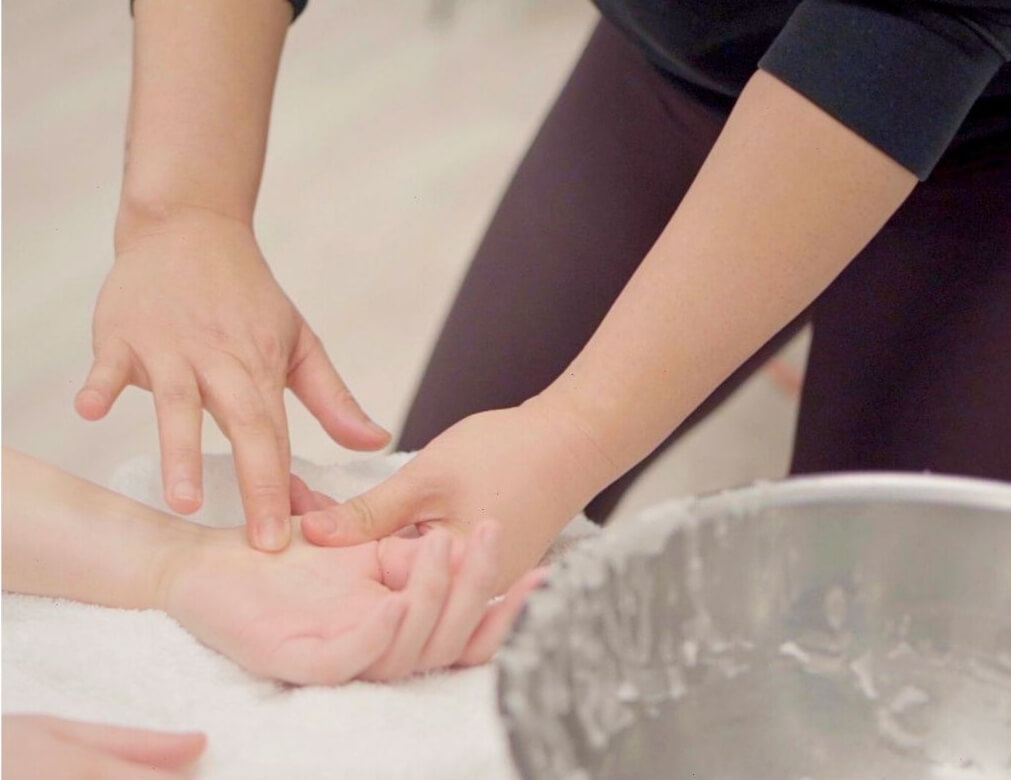
Benefits of Entering the Massage Therapy Field
Now that we’ve discussed the question, what is Massage Therapy? Let’s consider some key benefits of choosing a career in Massage Therapy.
Not only does it offer the possibility for flexible work hours and the potential for a lucrative income, but it also provides a sense of fulfillment from helping others. Moreover, with the growing awareness of the importance of holistic health, the demand for Massage Therapists continues to rise particularly as the healthcare needs of an aging population continue to evolve.
Required Skills for Success
You’ll need technical skills and personal attributes to excel as a Massage Therapist. Proficiency in various massage techniques, a deep understanding of human anatomy, and strong communication skills are essential.
Empathy, patience, and a commitment to lifelong learning will set you apart in this field. A genuine interest in wellness and a willingness to learn is all you need if you’re looking to enrol in our Massage Therapist training. Keep reading to discover how we’ll prepare you for the Massage Therapy career of your dreams.
How Medix College Prepares You for Success After Your Massage Therapy Courses
Our Massage Therapy Diploma program is designed to equip you with the necessary skills and knowledge to thrive as a massage therapist. Created in collaboration with industry experts, our program offers 2000 hours of in-class and on-site training, covering essential Massage Techniques, medical knowledge, and professional ethics.
Our curriculum is modular, requiring you to master each subject before progressing. With approval from the Ministry of Colleges & Universities (MCU) and recognition by the College of Massage Therapists in Ontario (CMTO), our program prepares you for the certification exams required to become a registered massage therapist (RMT) in Ontario.
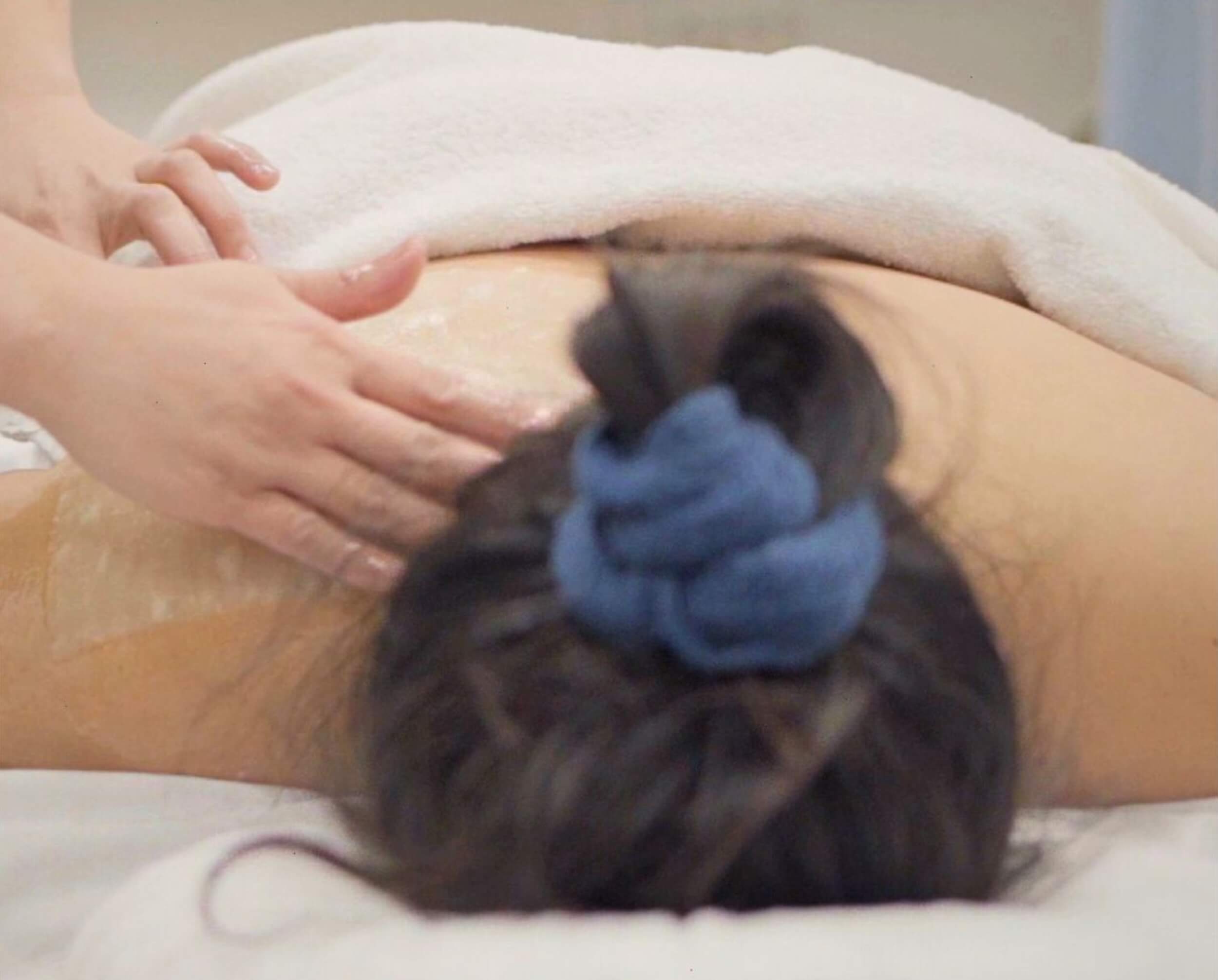
The hands-on learning experience is a cornerstone of our program. Our modern Massage Therapy labs provide a realistic environment to practice and refine your skills. You’ll gain practical experience through an on-site clinical externship, working with real clients under the supervision of experienced professionals.
Beyond technical skills, we also focus on personal and professional development. Our programs include mindset development and financial literacy skills, helping you navigate life’s challenges and succeed in your career.
Embark on Your Journey Today
Choosing a career in Massage Therapy is a decision to embrace a fulfilling and dynamic profession. At Medix College, we are committed to guiding you on this journey and providing the education and support you need to succeed.
If you’re ready to embark on a rewarding career in Massage Therapy, we invite you to explore our program and take the first step toward a brighter future.
Are you ready to start your journey in our Massage Therapy Courses?
Contact Medix College for more information!
Frequently Asked Questions
Question: What is the purpose of Massage Therapy?
Answer: According to research, Massage Therapy has been proven effective for treating chronic pain conditions such as fibromyalgia and osteoarthritis.
Question: What is the simple definition of Massage Therapy?
Answer: A Massage Therapist is a healthcare professional specializing in massage therapy by manipulating the client’s body’s soft tissues, such as muscles, ligaments, and tendons.
Innovative Massage Techniques and Trends: What’s New in the Industry?
March 15, 2024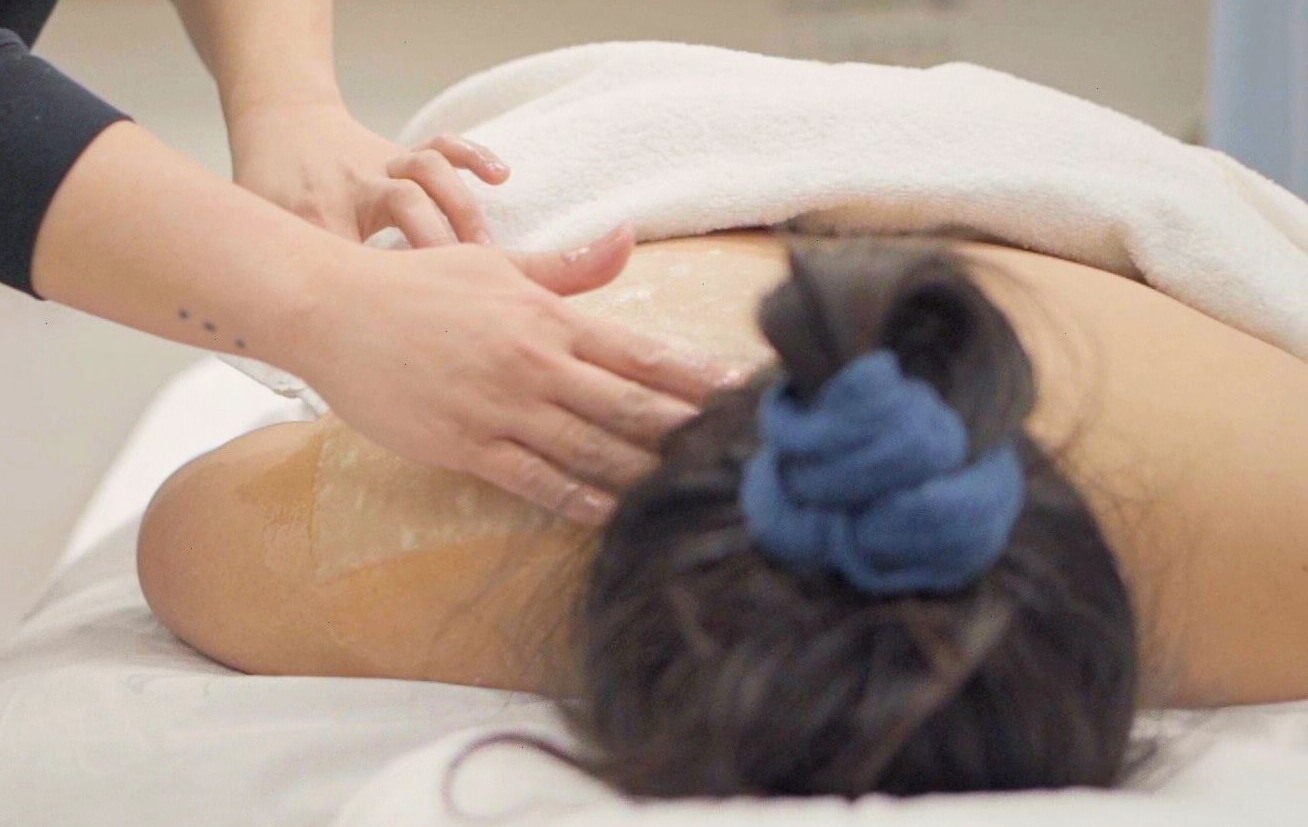
As the industry continues to grow, we’ve witnessed the emergence of innovative massage techniques and trends. In this blog post, we highlight what’s new and what’s making waves in the massage world.
What Are Some Innovative Massage Techniques Trending Today?
VR massages, Sound Vibration Therapy, CBD-Infused Massages, Eco-Conscious Practices, and Ayurvedic Massage Techniques are among the current popular and innovative massage techniques approaches in the massage industry, offering unique benefits and experiences.
Virtual Reality (VR) Massages
Technology integration into therapeutic massage therapy has led to the development of VR massages. This unique massage approach combines the immersive experience of virtual reality with traditional massage techniques to provide a holistic relaxation experience.
Clients wear VR headsets during their massage sessions, transporting them to serene environments like tropical beaches. This multi-sensory experience enhances relaxation and aids in the effectiveness of the massage.
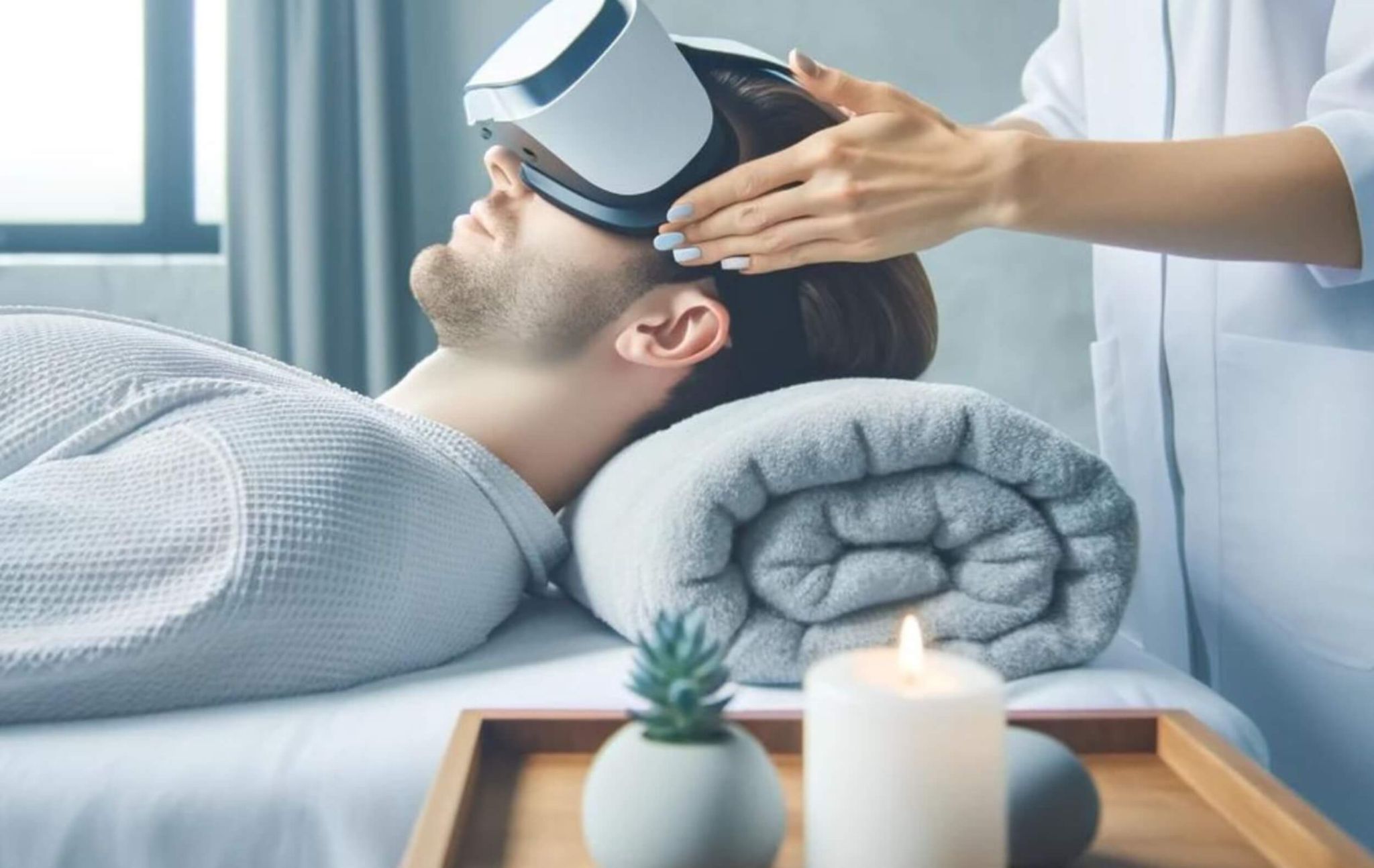
Sound Vibration Therapy
Sound vibration therapy, also known as sound healing, is a trend that’s gaining momentum in the massage industry. This technique involves using instruments like gongs, tuning forks, and singing bowls to create sounds that produce vibrations.
These vibrations are believed to promote healing and relaxation by improving the body’s energy flow. Sound vibration therapy can offer a deeply soothing and meditative experience when combined with traditional massage techniques.
CBD-Infused Massages
The rising popularity of CBD (cannabidiol) for its therapeutic benefits has paved the way for its incorporation into massage therapy. CBD-infused massages utilize oils or lotions that contain CBD to enhance the massage experience.
CBD is known for its anti-inflammatory and pain-relieving properties, making it an excellent addition to massages for individuals looking to relieve chronic pain, reduce inflammation, and promote relaxation. This trend capitalizes on the holistic and natural approach to wellness that many clients seek today.
Eco-Conscious Practices
Sustainability has become a priority across industries, including massage therapy. Eco-conscious practices are not necessarily a massage technique but a trend that influences how massage services are delivered.
Many therapists and spas now use organic, cruelty-free, and sustainably sourced products. Additionally, they are adopting practices that minimize waste and reduce their carbon footprint.
Ayurvedic Massage Techniques
Ayurveda, an ancient Indian system of medicine, has influenced the massage industry with its holistic approach to health and wellness. Ayurvedic massage techniques, such as Abhyanga (a warm oil massage), use specific herbal oils tailored to the client’s dosha (body type) to balance the body’s energies.
These techniques are gaining popularity for their ability to detoxify the body, improve circulation, and promote overall well-being. With a growing interest in holistic health practices, Ayurvedic massages are becoming a sought-after experience for those looking to integrate mind, body, and spirit wellness.

What Is the Most Effective Massage Technique?
Deep Tissue Massage is the most effective technique for those seeking relief from chronic aches, pains, and contracted areas such as stiff necks, low back tightness, and sore shoulders. Its effectiveness lies in the method’s ability to realign deeper muscles and connective tissue layers.
While determining the best massage technique can be subjective, varying based on individual needs and preferences, Deep Tissue Massage consistently emerges as a top choice for addressing specific physical issues.
Deep tissue massage can significantly reduce chronic pain and muscle tension by applying slow, deliberate strokes that focus pressure on layers of muscles, tendons, or other tissues deep under your skin.
What Are The Five Basic Massage Techniques?
The five fundamental massage techniques foundational to a therapist’s skill set are Effleurage, Petrissage, Friction, Tapotement, and Vibration. These can be applied to the shoulder, back, and foot massage techniques covered in our massage therapist program.
Effleurage entails gentle, sweeping strokes to initiate muscle relaxation. Petrissage dives into kneading deeper muscle layers, boosting circulation and toxin removal. Through deep, circular motions, friction targets specific areas to enhance healing.
Tapotement, with its rhythmic tapping, rejuvenates and energizes muscles. Vibration applies quick, oscillating movements to encourage circulation and muscle activity, balancing relaxation with vitality. These techniques form the cornerstone of effective massage therapy, underpinning the journey toward specialized therapeutic practices.
Are you looking for massage therapy courses in Toronto?
Contact Medix College for more information.
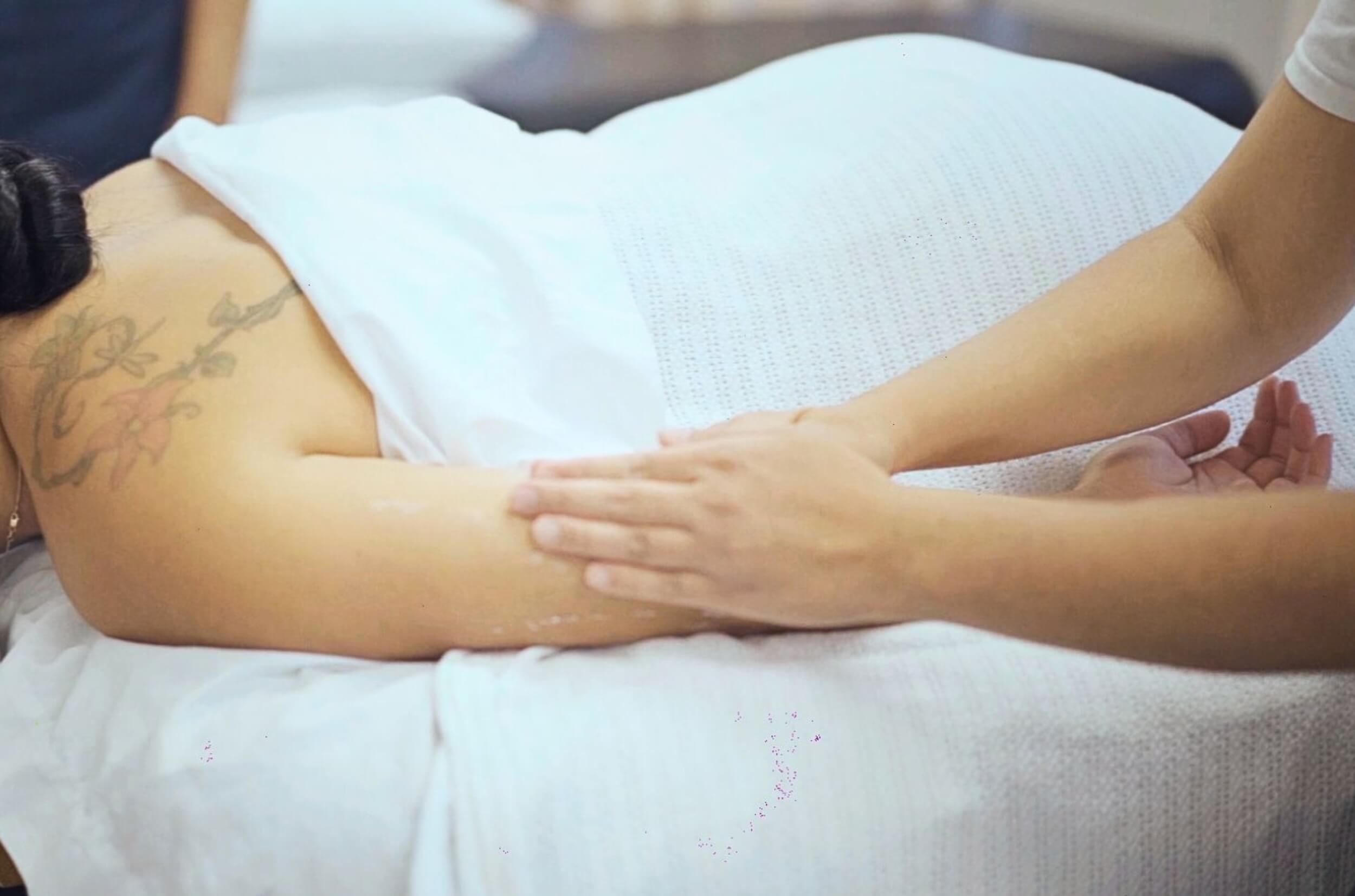
Massage therapy is an ancient healing practice that has gained widespread popularity. The benefits of Massage therapy go well beyond stress relief or relaxing spa treatments. On the contrary, it is an evidence-based therapeutic intervention that can be used to treat acute and chronic conditions. Massage Therapists work with various patients to treat illness, injury rehabilitation, and disability.
As a massage therapy student, you are embarking on a journey to master the art and science of therapeutic massage. With the skills you will acquire in our massage therapy diploma program, you will be fully equipped to improve your patient’s quality of life significantly. This guide aims to provide essential insights and tips to help you decode the world of therapeutic massage and excel in your studies.
What Is Therapeutic Massage Therapy?
Massage therapy is the manipulation of soft tissues of the body, including muscles, connective tissue, tendons, ligaments, and joints.
As a massage therapy student, you will be trained to deliver various massage techniques, including how to treat specific signs and symptoms of various conditions. Knowing which technique is the safest and most effective is one of the many things you will learn in school.
What are the main benefits of therapeutic massage? It’s restorative and is designed to alleviate pain and discomfort. Keep reading to discover some of the basics and popular techniques you can use after training.

The Basics of Therapeutic Massage
Now that you know the answer to the outset: what is therapeutic massage therapy, it’s time to unveil some basic principles. First, let’s examine the purpose. Therapeutic massage is about promoting health and well-being. How does therapeutic massage work? It manipulates soft tissues to alleviate pain, reduce muscle tension, improve circulation, and enhance overall physical wellness.
Keep this holistic perspective in mind as you learn the techniques and theories. An understanding of anatomy and physiology is the foundation of effective massage therapy. In our massage therapy diploma program, we study the muscles, bones, joints, and the various systems of the body thoroughly. This knowledge will guide your practice and help you tailor your treatments to patients’ needs.
Explore Therapeutic Massage Techniques
The following are some therapeutic massage techniques that will help you provide a safe and effective massage treatment.
- Swedish Techniques: The fundamental technique taught to massage therapy students. It involves five main strokes: effleurage, petrissage, friction, tapotement, and vibration. Mastering these strokes and their variations is essential for providing a massage treatment.
- Myofascial Release: Focusing on releasing fascial restrictions. Understanding the fascial network and how to apply sustained pressure improves mobility and reduces pain in patients.
- Joint Mobilization: Manual technique involving the gentle movement and stretching of bones and ligaments at the joint to increase mobility.
- Lymphatic Drainage Techniques – Also known as manual lymphatic drainage, relieves swelling when medical treatment or illness blocks your lymphatic system, causing swelling. This technique is delivered by gently manipulating specific body areas to help lymph move out of your body as waste material.
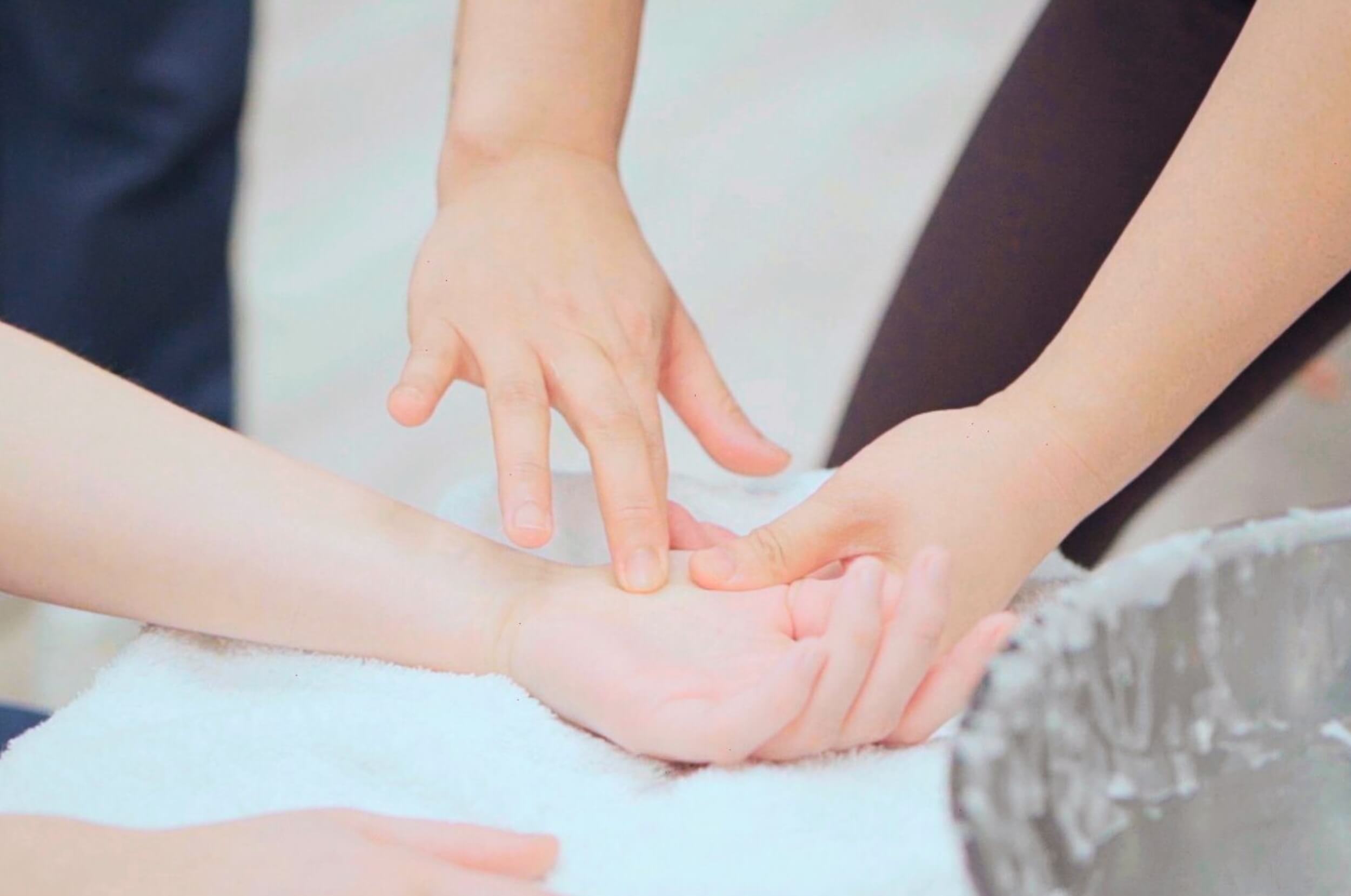
Best Practices to Remember
Today, we’ve explored the definition of therapeutic massage at length. Now, let’s discover some practical tips for success as a Registered Massage Therapist.
- Develop Your Palpation Skills: Palpation, or the ability to feel and assess the body’s tissues, is crucial for massage therapists. Practice regularly to enhance your sensitivity and ability to detect tension and abnormalities.
- Effective Communication: As a healthcare provider, clear and open communication with patients is vital. Before each session, discuss their health history, goals of treatment, and contraindications to massage therapy. During the massage, ask for feedback to ensure comfort and safety.
- Self-Care: Massage therapists should also make time for their health and wellness. You can do this by incorporating stretching, strength training, and proper body mechanics, which will allow longevity in your profession.
- Continuing Education: The field of massage therapy is continually evolving. Stay up-to-date with the latest techniques, research, and trends by pursuing continuing education courses and attending workshops.
As you embark on your journey to career success in massage therapy, remember that it combines science, art, and compassion. In training, embrace the learning process, build a solid foundation in anatomy and technique, and continuously refine your skills. Your dedication to mastering therapeutic massage will benefit your client’s well-being and provide you with a fulfilling and rewarding career!
Are you ready to embark on our massage therapy education?
Contact Medix College for more information!
FAQs
Q: How does therapeutic massage work?
A: It involves manipulating soft tissues to alleviate pain, reduce muscle tension, improve circulation, and enhance overall physical wellness.
Q: What is the main benefit of therapeutic massage?
A: It’s restorative and is designed to alleviate pain and discomfort.
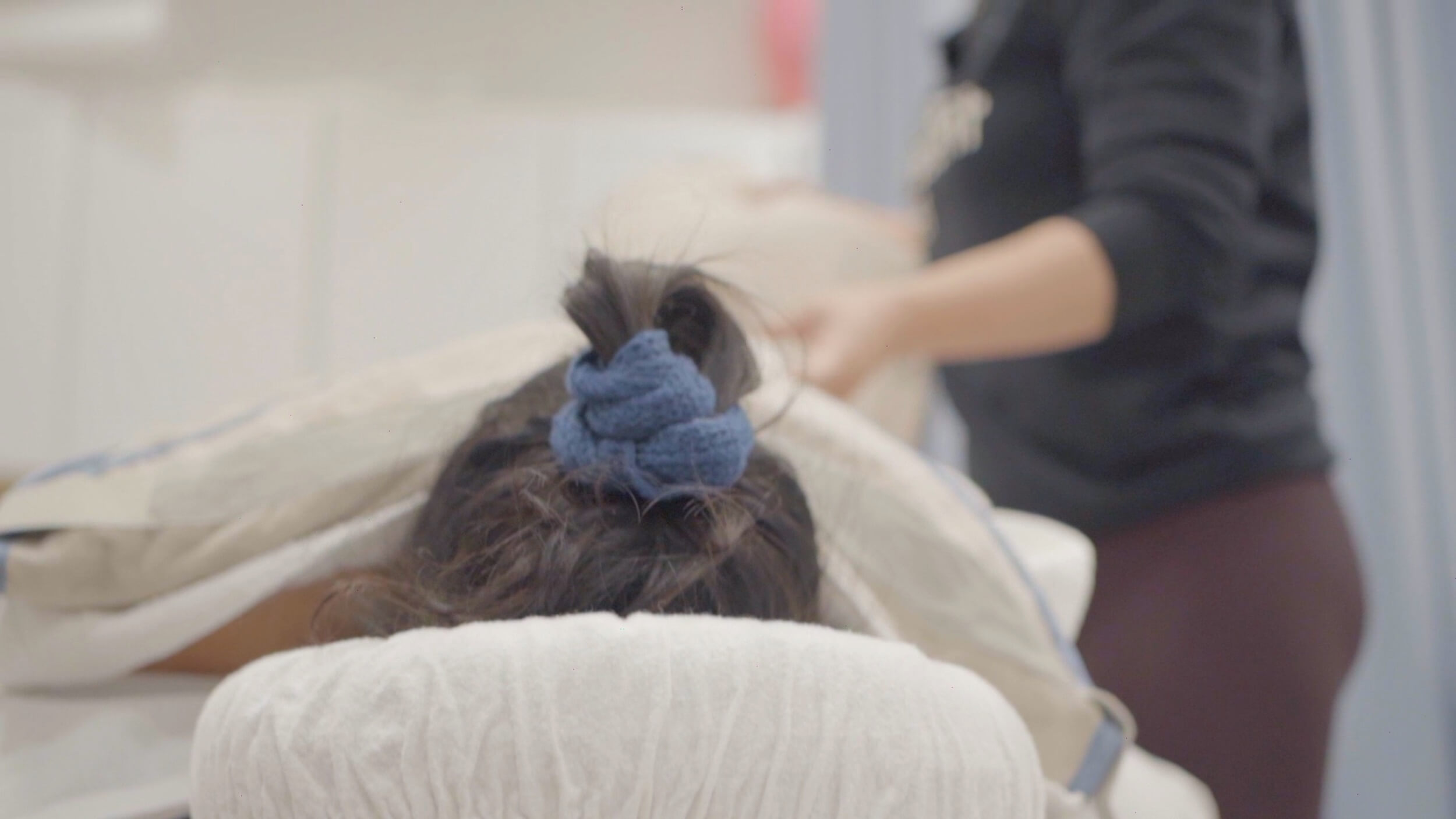
Becoming a massage therapist could be a great profession if you’re looking to pursue a career path that allows you to facilitate rehabilitation and maintenance of wellness for your clients. Naturally, before you get started, you may have some questions about the training, such as how long does it take to complete the training as a massage therapist in Ontario? This answer is simple: depending on what campus you attend, it will take you one to two years to complete your diploma. Keep reading for a step-by-step guide to becoming a massage therapist and how your studies at Medix College will provide you with the skills, experience, and confidence you’ll need to reach your goals.
How to Become a Massage Therapist: Start by Acquiring the Skills You Need
To become a massage therapist, it’s important to ensure that you have the theoretical and practical knowledge needed to provide safe and effective treatments to your clients. You may be wondering – How do I become a massage therapist in Ontario?
Those seeking your services will trust your expertise, as you assess their needs, administer various massage techniques, and provide home-care instructions. To maximize client satisfaction on the job, it’s essential to start your career with a training program that provides you with a well-rounded knowledge base, an understanding of industry best practices, and the opportunity to put your skills into practice.

The Massage Therapy Diploma Program at Medix College covers the essential knowledge needed to become a massage therapist in Ontario, from fundamental anatomy and physiology to massage theory and techniques. Depending on what campus you attend, it will take you one to two years to complete in-class instruction. The training provided will be both practical and theoretical and will provide you with hands-on experience which will be crucial to your career success.
Get Hands-on Experience in a Practicum
Massage therapy is a tactile skill set. Once you have a strong command of fundamental theory, it will be crucial to obtain as much hands-on practice as possible. Be sure to choose a massage therapy program that offers a practicum and / or clinical placement to ensure your professional competence, confidence, and access to valuable industry connections. The Massage Therapy Diploma Program at Medix College offers an on-site student clinic that will allow you to hone your massage therapy skills by providing treatments to the public and making valuable connections between course concepts and hands-on practice while getting comfortable in a professional environment.
Pass the Certification Examinations You Need to Start Working
Wondering how to become a massage therapist in Ontario once you’ve accumulated the industry knowledge and experience you need to serve clients? In Ontario massage therapy graduates must complete and pass two provincial examinations which allows them to register with the College of Massage Therapists of Ontario.
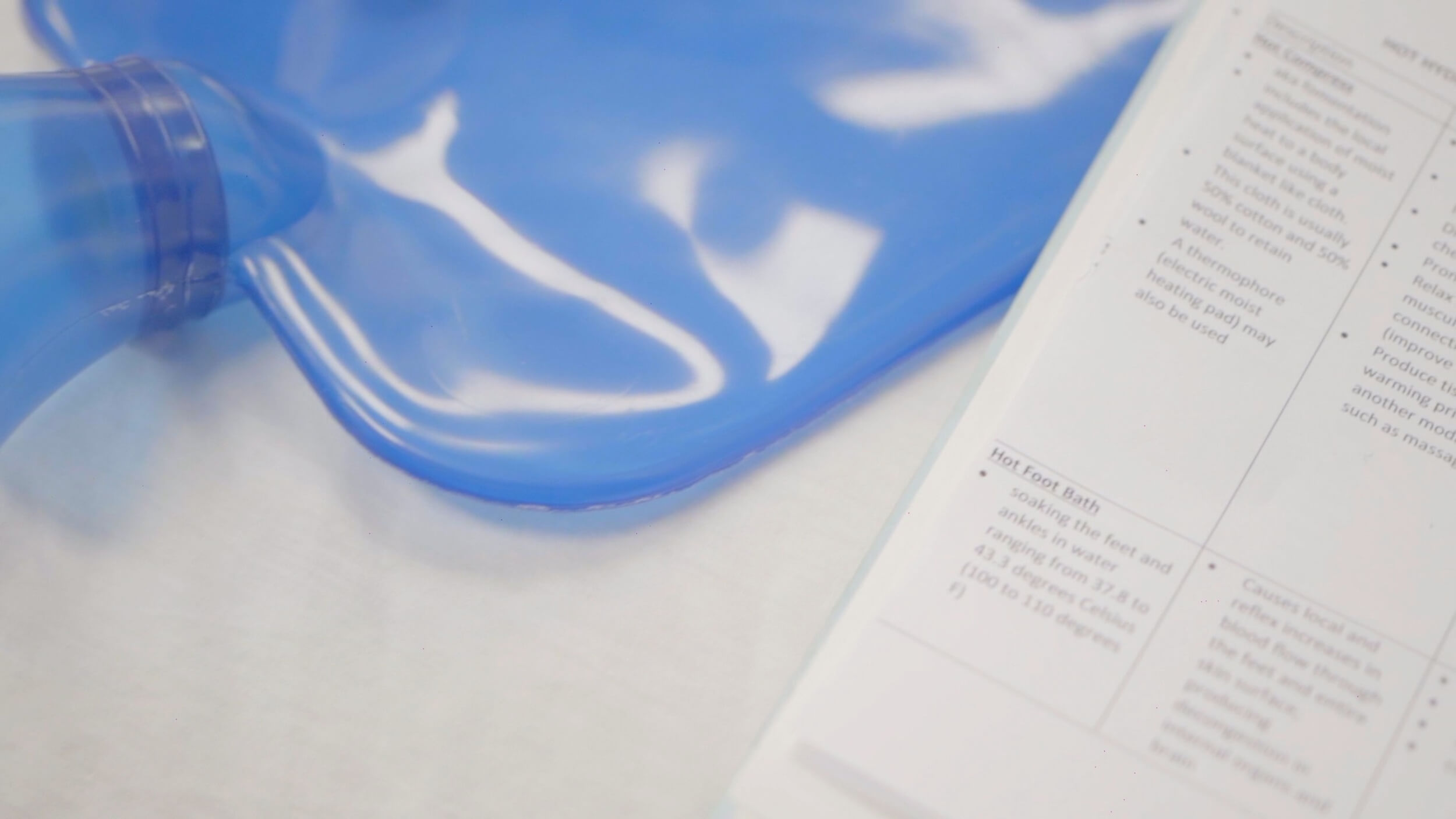
The MCQ Exam is a computer-based multiple-choice exam designed to determine whether you have a solid knowledge of key theoretical concepts. Students have 3 hours to complete 150 questions and can retake the exam up to 3 times.
The OSCE exam is a more in-depth evaluation of your hands-on knowledge as it applies to clinical practice. It lasts about an hour and a half and must be passed within three attempts. Once you’ve completed both examinations successfully you’ll be ready to complete your registration with the CMTO and start your practice as a Registered Massage Therapist (RMT) in various settings such as rehabilitation or massage clinics, fitness centers, and spas to name a few.
After all the information provided above, you may find yourself questioning, is massage therapy a good career in Ontario. Massage Therapy has been proven to be an effective way of managing physical health and well-being with an increasing popularity and demand, resulting in a greater need for qualified and professional massage therapists. Simply put, yes a career in Massage Therapy is a good one with promising future opportunities for those with a desire to help others.
FAQs To Consider:
How to become a massage therapist in Ontario
Before you start the process of becoming a licensed massage therapist, it’s important to ensure that you have the theoretical and practical knowledge needed to provide safe and effective care to clients.
How to become a massage therapist in Ontario
After successfully completing your diploma in massage therapy, You must pass two examinations to be eligible for registration with the College of Massage Therapists of Ontario (CMTO).
Is massage therapy a good career in Ontario?
Massage Therapy has been proven to be an effective way of managing physical health and well-being with an increasing popularity and demand, resulting in a greater need for qualified and professional massage therapists. Simply put, yes a career in Massage Therapy is a good one with promising future opportunities for those with a desire to help others.
How long does it take to become a massage therapist in Ontario?
Depending on what campus you attend, it will take you one to two years to complete in-class instruction. You will then be eligible to take the provincial exams and start your practice as a Registered Massage Therapist (RMT).
Are you ready to start our massage therapy training?
Contact Medix College to learn more!
Is Massage Therapy a Good Career Choice? Exploring Opportunities and Benefits
September 01, 2023
The wellness industry has experienced robust growth in recent years, with an increasing number of people seeking out therapeutic services to enhance their health and well-being. Within this burgeoning industry, massage therapy has carved out a niche as a highly sought-after profession. But the question on the minds of many considering this field is: is massage therapy a good career choice?
The short answer is a resounding “Yes”. Especially if you’re looking for a profession that offers flexibility, financial rewards, personal satisfaction, continuous learning opportunities, and the chance to make a genuine difference in people’s lives. And from a Canadian perspective, the growing demand, structured regulatory frameworks, and diverse career pathways make it an excellent place to establish a fulfilling career in massage therapy. Whether you’re a seasoned professional considering a shift or a student exploring career options, massage therapy presents a compelling choice worth considering. We’ll explore this question further in this blog post, particularly focusing on opportunities and benefits in Canada.
The Growing Demand
Before settling on a future career, it’s a smart move to consider the long-term prospects of that career. Is massage therapy a good career choice?
To begin, it’s essential to note that there’s a steadily increasing demand for massage therapists, especially in developed countries like Canada. With the growing recognition of the therapeutic benefits of massage – from reducing stress and anxiety to alleviating muscle pain and tension – there’s a heightened need for professionals trained in this area. Becoming a massage therapist can be a great career choice if you enjoy helping others, have an interest in holistic wellness, and value flexibility in your work. With growing demand and potential for personal satisfaction, it’s worth considering if these aspects align with your aspirations and skills.
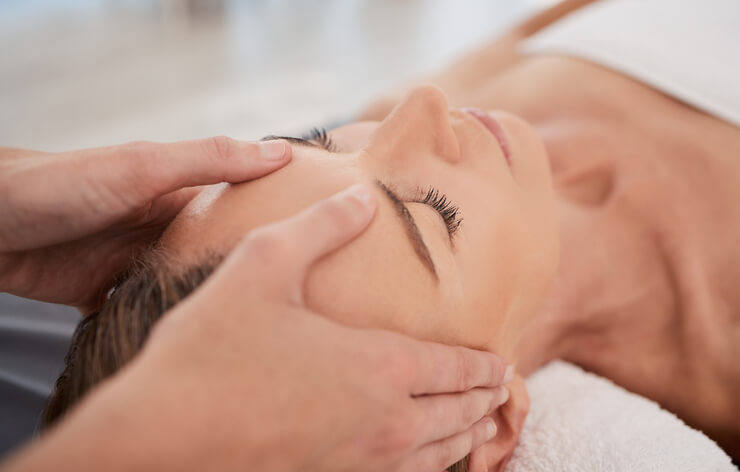
In reinforcing the opportunities available in the field of massage therapy, it’s noteworthy to mention data related to this role, as provided by Job Bank Canada. In a nutshell, the employment outlook for massage therapists (in Ontario between 2022 and 2024) is exceptionally promising.
Several driving factors contribute to this positive outlook. Firstly, there’s an anticipated employment growth in the sector, which will naturally result in the creation of numerous new positions for massage therapists. Additionally, as seasoned professionals approach retirement, a moderate number of positions are expected to open up, offering further employment opportunities. It’s also worth noting that there is only a small number of unemployed workers in Ontario with recent experience in this profession, signalling a favourable market for newcomers and those looking to establish themselves in the field.
Opportunities in Canada
Is massage therapy a good career in Canada? Once again, the answer is yes! Massage therapy is a commendable career in Canada. The country has seen a growing demand for trained therapists, bolstered by regulatory frameworks in several provinces. With diverse career pathways, potential for lucrative earnings, and increasing recognition of therapeutic benefits, it offers both financial and personal satisfaction.
Canada, in particular, has seen a notable surge in the popularity of massage therapy. Several provinces regulate massage therapy, ensuring that professionals meet specific educational and training standards. This regulation not only provides a structured framework for those entering the field but also adds a layer of credibility to the profession, assuring clients that they are in safe, skilled hands.

There are various career pathways available for massage therapists in Canada. One can open a private practice, work within a wellness clinic or spa, collaborate with healthcare professionals like physiotherapists and chiropractors, or work in corporate settings offering office massage. For those who love to travel, opportunities to work in luxury resorts or aboard cruise ships are an option.
Benefits of Choosing Massage Therapy As A Career
One of the most appealing benefits of a career in massage therapy is the flexibility it offers. Whether one chooses to work part-time or full-time, establish a practice from home, or operate in various settings, the options are diverse, allowing for an improved work-life balance that many find attractive. Additionally, while earnings in this profession can fluctuate depending on factors like location, specialization, and personal initiative, there’s substantial potential for a profitable career.
As the demand for massage therapy increases, so does the possibility of earning more, especially for those who invest in further training and specialization. Beyond the financial aspect, there’s a profound sense of personal satisfaction derived from knowing you play a role in enhancing someone’s well-being. This emotional reward, for many, is on par with the monetary benefits.
The massage therapy domain is dynamic, with emerging techniques and methodologies that offer continuous learning opportunities for those passionate about growth. Further, due to the interconnected nature of the wellness and healthcare sectors, massage therapists frequently collaborate with various professionals, paving the way for expansive networking and joint ventures.
FAQs To Consider
Q: Is massage therapy a good career in Canada?
A: Yes, massage therapy is a commendable career in Canada. The country has seen a growing demand for trained therapists, bolstered by regulatory frameworks in several provinces. With diverse career pathways, potential for lucrative earnings, and increasing recognition of therapeutic benefits, it offers both financial and personal satisfaction.
Q: Is a registered massage therapist a good job for me?
A: Becoming a registered massage therapist can be a great career choice if you enjoy helping others, have an interest in holistic wellness, and value flexibility in your work. With growing demand and potential for personal satisfaction, it’s worth considering if these aspects align with your aspirations and skills.
Are you Looking for world-class massage therapy training?
Contact Medix College for more information.
Taking a Massage Therapist Program? 4 Techniques That Help Clients Manage Chronic Pain
June 16, 2023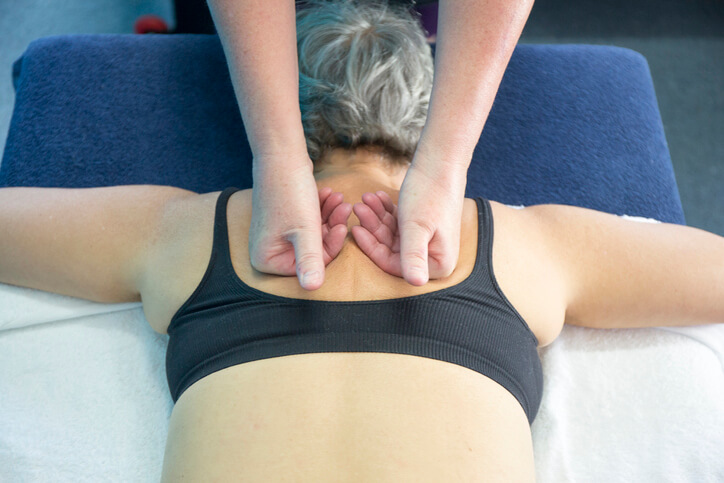
As of 2021, about 8 million Canadians reported chronic pain. Many who deal with chronic pain find that their everyday activities are disrupted due to their conditions. Pain medications are commonly used and practical, yet they come with various side effects leaving many chronic pain patients opting for more natural remedies. As an aspiring massage therapist, you may be glad to know that there are techniques you can use to relieve those struggling with painful conditions. Keep reading to discover some massage methods explicitly meant for pain relief.
1. Deep Tissue Massage Effectively Relaxes Muscles
A deep tissue massage involves using slow, deep strokes to target the inner layers of a client’s muscles and connective tissues. Those struggling with chronic pain from an injury can benefit from this technique as it breaks up the scar tissue that often forms due to an injury, speeds up the healing process by increasing blood flow, and reduces inflammation.
Deep tissue massage also helps to keep spasms and tension at bay, helping clients to feel more relaxed and comfortable. Because this method is so effective for releasing tension in the body, many clients experience an emotional release afterward.

2. Myofascial Release Can Relieve
In our massage therapist course, you’ll learn the anatomy and physiology behind various effective massage techniques. A fascia is a connective tissue under the skin that supports muscles and organs. It also plays a vital role in mobility, allowing muscles to stretch and contract.
Fascia has nerves making it sensitive. Scientists are still working to reveal more about the function of this vital bodily tissue. Still, they know the painful conditions when dysfunction like myofascial pain syndrome occurs. Tension occurs and causes pain that can be quite severe. Myofascial release involves deep kneading movements to stretch the fascia and release built-up tension.
3. You’ll Use Swedish Massage as an Effective Tension Reliever After Your Massage Therapy Program
A Swedish massage, also known as a traditional massage, is a commonly used technique that you’ll surely use after joining our massage therapist course. This technique does not target deep tissue like the two methods above. In addition, it is not applied to any specific pain point. Instead, a Swedish massage is widely used for an overall relaxing effect, increasing blood flow, releasing muscle tension, and balancing the nervous system – all effects that can produce a comforting, pain-relieving effect.

4. Trigger Point Massages Can Help Get Rid of Painful Knots
Trigger point massages require a trained hand to identify tight muscle areas called trigger points. Trigger points are painful nodules that are often sore to the touch. During a trigger point massage, pressure is applied to these painful areas to increase blood flow and release muscle knots.
This technique does not produce a calming spa-like experience and is quite painful, so clients should be warned, and the function of the technique should be explained.
At Medix College, the curriculum relies on two principles:
- Teach to foster an understanding of the material versus memorization of material.
- Implementation of cross-curricular integration throughout the program.
Are you ready to join our massage therapist program?
Contact Medix College to learn how to get started!
FAQ’s To Consider
Can massage therapy help with chronic pain?
Yes. While pain medications are commonly used and practical, they have various side effects, leaving many chronic pain patients opting for more natural remedies.
Does deep tissue massage help with chronic pain?
Yes. Those struggling with chronic pain from an injury can benefit from a massage therapy treatment using this technique which has proven to be beneficial in increasing mobility and reducing pain.
How does massage therapy help chronic pain?
Massage therapy provided by a registered massage therapist who has successfully completed our massage therapy program as well as the provincial regulatory exams, can be very effective in treating chronic pain conditions. This is achieved by increasing circulation, mobility, and retraining of injured parts of the nervous system.
Considering Massage Therapy Training? Understand the Importance of Anatomy On The Job
May 05, 2023
The human body is a complex, fascinating mechanism with various structures and parts connected and working efficiently. In a way, the human body works like a machine (a car, for example), where a defective part can cause the entire system to malfunction. Whenever this happens, only a trained auto mechanic can identify the root of the problem and offer solutions.
Think of the human body as a car and of the auto mechanic as a massage therapist, and you’ll see why anatomical knowledge is vital for massage therapists. Understanding anatomy will help you identify and target specific muscle groups, better assess and treat soft muscle injuries, and avoid causing harm to your clients.
If you’re considering starting Massage Therapy training, our diploma program offers courses on Regional Anatomy that introduce students to basic structural and functional principles in different human body regions. In this blog, we’ll briefly explain the importance of anatomy to massage therapy.
Identify Muscle Groups in Massage Therapy Training
A thorough understanding of anatomy is essential for massage therapists as it helps them identify the muscles, bones, joints, nerves, blood vessels, and other structures they typically work on during massage sessions. With this knowledge and Massage Therapy training, graduates can apply appropriate techniques and pressure to specific areas and achieve desired results. For example, if you are treating a client who has lower back pain, you can use your anatomical knowledge to identify the muscles and joints involved and apply specific techniques to relieve the pain.
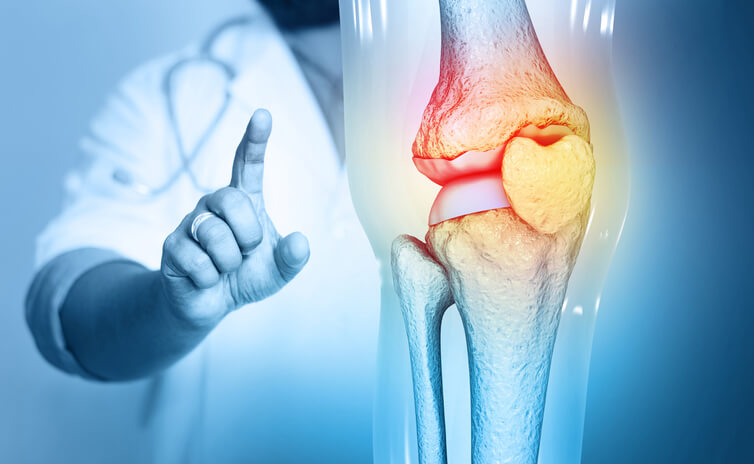
Understanding the Body and Improved Communication
The ability to fully understand how the body reacts to massage and how massage affects the body comes from having a thorough understanding of anatomy. Comprehensive anatomical knowledge can help you discover the many benefits of massage, including how it can increase lymphatic drainage, lower blood pressure, ease muscle tension, and improve blood circulation. With time, this knowledge will vastly improve your massage skills and help you provide your clients with better outcomes.
Technical skills are vital, but a lot can also be said about communicating properly as a massage therapist. Full anatomical knowledge will make you more adept at explaining what you’re doing to your clients (and why). It’ll come in handy when you need to educate them on how to care for their bodies. Beyond this, knowing and using the correct anatomical terms and concepts will help you communicate better with doctors, chiropractors, physical therapists, osteopaths, and other members of your client’s medical team.

How Medix College Can Fast-Track Your Progress
Our Massage Therapy diploma program is designed to prepare students to become skilled and knowledgeable massage therapists who can provide safe and effective treatments to clients. The program can be completed in less than a year and combines classroom instruction with practical, hands-on training in various massage techniques.
Some of the courses covered in your massage therapist training include Regional Anatomy I & II, Massage Theory and Techniques, Palpation, and Hydrotherapy. By enrolling in this program, you can benefit from a comprehensive education that prepares you to complete your registration exams and become a massage therapist. You will also gain the practical experience to confidently provide therapeutic massage to clients in various settings, from spas and wellness centers to fitness clubs and rehabilitation clinics.
Are you Interested in starting a Massage Therapy training program?
Contact Medix College to learn how you can get started!
FAQ
Do Massage Therapists Need to Know about Anatomy?
Yes, a thorough understanding of anatomy is essential for massage therapists as it helps them identify the muscles, bones, joints, nerves, blood vessels, and other structures they typically work on during massage sessions.
Why Learn Anatomy During a Massage Therapy Program?
Understanding anatomy will help you identify and target specific muscle groups, better assess and treat soft muscle injuries, and avoid causing harm to your clients.
Do massage therapists learn anatomy?
Medix College’s Massage Therapy program offers courses on Regional Anatomy that introduce students to basic structural and functional principles in different human body regions.
What is anatomy in massage therapy?
Understanding how the body reacts to and is affected by massage comes from having a thorough understanding of anatomy. Anatomical knowledge can help you discover the benefits of massage, including how it can increase lymphatic drainage, lower blood pressure, ease muscle tension, and improve blood circulation.
3 Interesting Work Environments to Explore After Massage Therapy Training
March 10, 2023
Registered massage therapists assess and plan treatments for the dysfunction and pain of soft tissue and joints within the body. Many of them work as self-employed health professionals in a variety of settings. Depending on where you choose to work after completing the necessary vocational training, your duties may vary slightly. If you’re considering pursuing this career path, here are three interesting work environments to explore during your job search.
1. Promote Relaxation in a Spa Setting After Massage Therapy Training
Massage therapists working in a spa setting aim to create a calming ambiance for their clients while providing them with the beneficial effects of a well thought out treatment plan. Though the spa environment seems laid back, the work tends to be fast-paced. Spas are one of the most popular places for people to seek massage therapy.
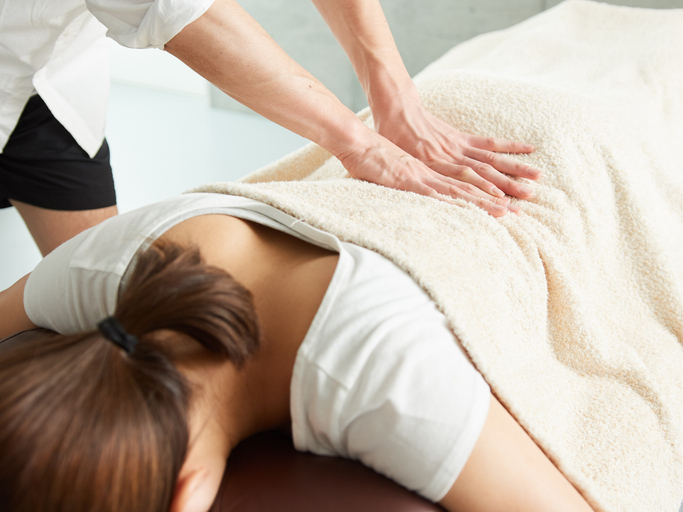
In addition to the specialized competencies that you’ll gain in massage therapy training, your success in a spa setting depends on several soft skills. For example, excellent customer service will foster lasting loyalty among spa clientele. Strong time management will make it easier for you to handle a wide variety of work duties and potentially several clients at a time.
2. Help Athletes Recover in Fitness Clubs
Recovery is an essential part of maintaining physical fitness. Knowing this, many fitness centres add massage therapy services to their membership packages to sweeten the deal for athletes and gym lovers. This is an excellent way for fitness centres to diversify their revenue sources and create more value for their clients. As a massage therapist working in this environment, your main objective will be to help members reduce delayed onset muscle soreness, stiffness, and fatigue to improve their performance on the field or at the gym.
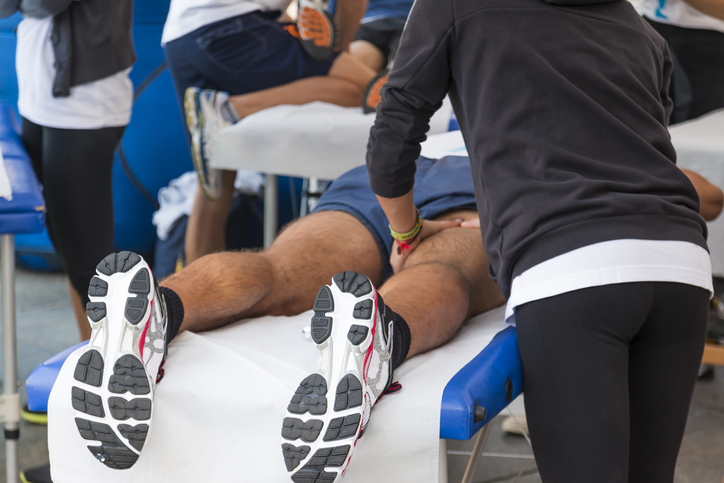
3. Promote Physical Health in a Hospital
If you’re seeking a more health-focused path, you can pursue a Massage Therapy career in a hospital setting. Many patients suffer from chronic and acute pain. Pain clinics within the hospital, the oncology floor, the intensive care unit, and the palliative care floors can all use the treatments provided by trained massage therapists to keep patients comfortable and speed up their recovery. In addition to patients, registered massage therapists working in a hospital can provide their services to staff members who are constantly on their feet, lifting patients and running around. They often deal with strains and muscle soreness and could benefit from your skills. This work setting provides plenty of learning opportunities and allows you to make a positive impact on others each day.
Our Massage Therapy diploma program provides students with the clinical skills and knowledge to maintain, rehabilitate, and augment physical functioning for clients in any work setting. Our onsite clinical component helps graduates make a smooth transition into the workforce, and our enriched academy program gives them the skills to reach their career goals and secure a solid future.
Ready to earn your Massage Therapy diploma?
Contact Medix College to learn how you can get started.
Tips for Starting Your Own Business After Massage Therapy Training
December 16, 2022If you dream of running your very own massage therapy business, the first thing you need to know is that it’s completely possible–and you can do it! Particularly as Canada’s population ages and more chronic pain solutions are needed, you can use your expertise to help many people.
The first step to a successful business is to develop the skills to set yourself apart as a qualified massage therapist with the ability to meet client needs. When you earn your diploma with Medix College, you’ll gain the knowledge you need to understand the anatomy, physiology, and pathology of the human body, which will inform your therapeutic practice. Labs will allow you to put that knowledge to work and hone your practical skills.
Now, you might be wondering what steps you should take once you’ve completed your training. Keep reading for three helpful tips for starting your very own massage therapy business.
Carve a Niche to Start a Successful Business After Massage Therapy Training
In massage therapy, one size does not fit all. You’ll discover a wide range of different client motivations once you begin the market research phase. It’s natural for new business owners to attempt to appeal to as many potential clients as possible; however, there’s a more effective way to establish a strong client base. After massage therapy training, try to remember the importance of finding your niche. Decide what unique value you want to bring to the table.

For example, do you want to specialize in treating older adults with chronic pain? Perhaps you see yourself working with athletes to deal with the aches and pains that come with their careers. Or what about offering stress relief treatments to busy people with tense muscles? By finding your niche, you can become the go-to within the area of expertise you’ve chosen. When prospective clients look for massage therapy services, they’re doing so for a reason. If their motivations line up with the treatments you offer, you’re bound to make a strong impression.
Create a Detailed Business Plan
This is an essential step that far too many business people skip. By creating a business plan, you set a clear direction and vision for the future. Start with an executive summary, which is a brief description of your business’s mission and goals. Go on to provide information on the products and services you plan to offer. Include a market analysis which involves the demand and clientele. Your business plan should also include a marketing plan to determine exactly how you will reach your prospective clients. Finally, don’t forget to make a detailed outline of operations and finances.

Rely on Technological Tools to Streamline Your Workflow
Starting a business involves many moving parts, and many new entrepreneurs find it challenging to prioritize their tasks. Fortunately, there are software solutions designed to streamline your daily tasks. Automate what you can by using a digital invoicing system, social media posts for marketing, and certain emails. Many clients like having the option to book appointments through an online portal and leave feedback.
After massage therapy school, your dream of starting a successful business can certainly come true. By earning a reputable diploma with Medix College, carving out a niche for yourself, creating a detailed business plan, and leveraging technological tools, you’ll have a solid foundation in place for a rewarding, lucrative career.
Ready to enrol in massage therapy college?
Contact Medix College to learn more!
In Massage Therapy School? 5 Ways to Improve Communication With Your Clients
October 03, 2022As a massage therapist, communication is an essential part of your job, as it’s a significant part of building the relationships that will keep clients coming back to you. Clients trusting you with their personal health information and allowing you into their space deserve to feel safe in your presence. In addition, when you make clients feel comfortable and content, they are more likely to refer your services to their friends and families.
The way you communicate with clients through the environment you create, the words you use, your non-verbal cues, and your active listening skills can help you to achieve an excellent overall experience for every patient you work with. Here are five ways to improve how you communicate with your clients as an aspiring massage therapist.
1. Be Aware of the Message You’re Sending Through Your Environment
You start communicating with clients as soon as they walk into your office. Almost immediately, it’s likely that they’ll have an idea of how you come across and how much they can trust your expertise. For this reason, you should use every opportunity to represent yourself professionally in your space. Most importantly, ensure that your space is clean and reflects high standards of hygiene. Using a subtle form of aromatherapy in the room may help clients feel at ease when they enter as well. Also, you’ll want to display your qualifications on the wall to reassure first-time clients of your expertise.

2. Use the Information You Gather During the Intake Process After Massage Therapy Training
After massage therapy school, the intake process will teach you lots of vital information about a client. They should be asked about their medical history, stressors, and what they’re looking to improve with you. The use of a form will help you organize this information and keep it in your records. Avoid standardizing your services, and instead, use all the information possible to create a highly individualized treatment plan for each client.
3. Be Mindful of Your Non-Verbal Communication
Non-verbal communication refers to facial expression, eye contact, gestures, posture, and body language. A soft, welcoming facial expression, direct but non-threatening eye contact and open body language are some basics to keep in mind as a massage therapy professional. Oftentimes, we are unaware of how our mannerisms come off to others. Try practicing positive body language or asking for feedback from someone close to you.
4. Use Active Listening
Active listening is more than just hearing someone’s statement. It’s about understanding another person, acknowledging their unique perspective, and validating their feelings. After massage therapy training, active listening will be very important as it makes clients feel that you’re willing and able to help them. Make note of both verbal statements and non-verbal cues from your client, ask follow-up questions to get useful information and paraphrase to ensure that you have an accurate understanding.

5. Check-In on Patients Consistently
Both throughout your sessions and on a long-term basis, make it a habit to keep the lines of communication open by checking in on your clients. Stay in touch with each client to track their progress and get feedback, and follow up after every session to see how they’re feeling. At Medix College, you can develop communication skills to help your future clients feel safe, comfortable and supported while building the theoretical and practical knowledge you’ll need to successfully assist them.
Ready to start massage therapy school in Ontario?
Reach out to Medix College to learn more!






